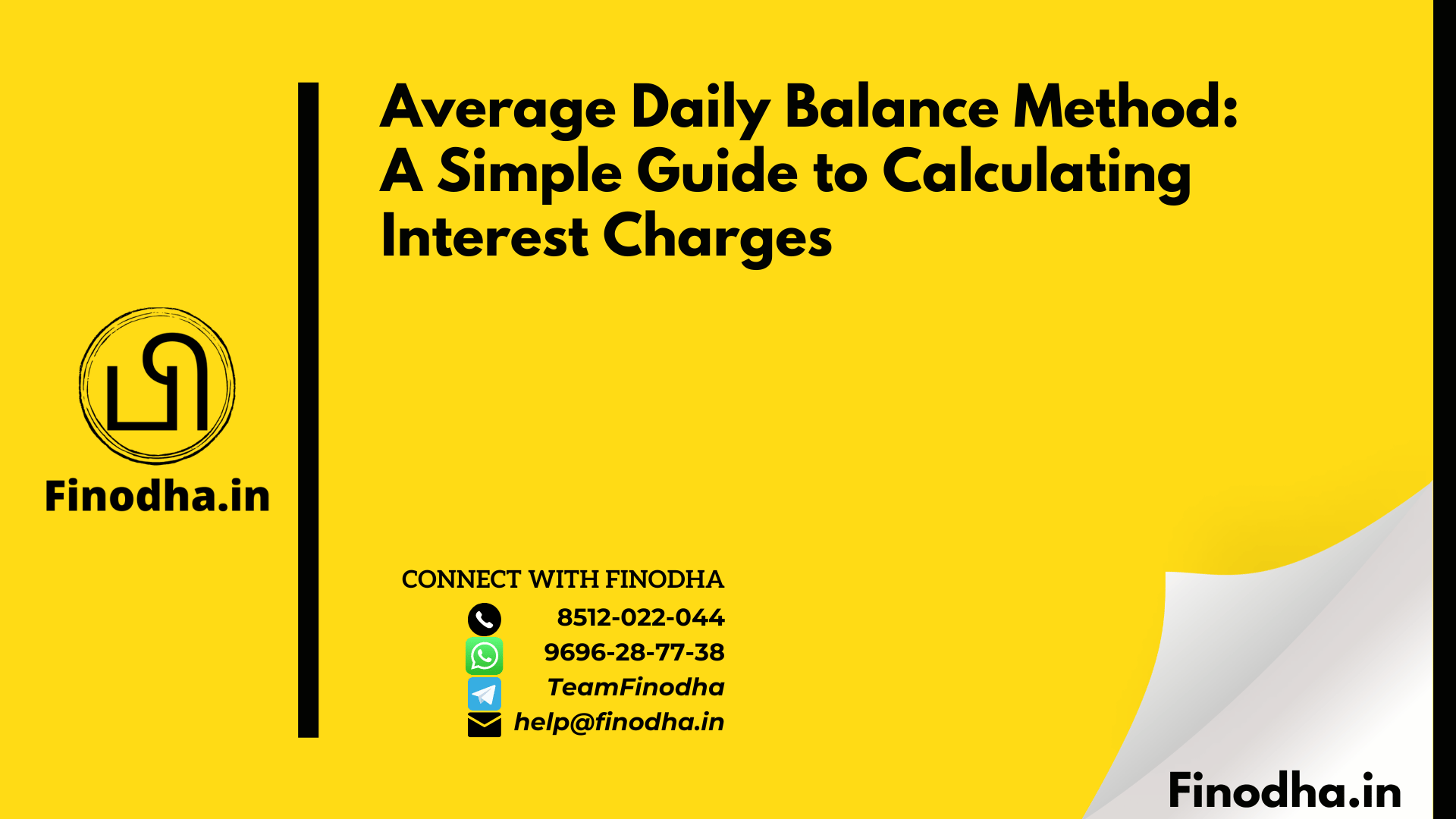Important Keywords: average daily balance method, interest calculation, finance charges, billing cycle, previous balance method, adjusted balance method, APR, Indian context.
Introduction:
The average daily balance method is an accounting technique commonly used to calculate interest charges based on the balance invested or owed at the end of each day during the billing period. This article aims to provide a clear understanding of the average daily balance method, including its calculation process and how it compares to other interest calculation methods.
Headings:
- What is the Average Daily Balance Method?
- Comparison to Other Interest Calculation Methods
- How Does the Average Daily Balance Method Work?
- Calculating Finance Charges with the Average Daily Balance Method
- Example: Average Daily Balance Method in the Indian Context
- Key Takeaways
- Conclusion
Sub-headings and Short Paragraphs:
What is the Average Daily Balance Method?
The average daily balance method is an accounting method used to determine the interest charges on credit cards or other financial accounts. Unlike other methods that consider the average balance throughout the billing cycle, this method calculates interest based on the balance at the end of each day.
Comparison to Other Interest Calculation Methods
- Previous Balance Method: The previous balance method calculates interest based on the amount owed at the beginning of the previous month. It does not consider any changes in the balance during the billing cycle.
- Adjusted Balance Method: The adjusted balance method calculates interest based on the amount owed at the end of the current billing cycle, after accounting for any payments or credits made during the cycle.
How Does the Average Daily Balance Method Work?
The average daily balance method takes into account the balance at the end of each day over the billing cycle, rather than using an average balance. By summing up the balances for each day and dividing by the total number of days in the cycle, an average daily balance is obtained.
Calculating Finance Charges with the Average Daily Balance Method
To calculate finance charges using the average daily balance method, the average daily balance is multiplied by the cardholder’s annual percentage rate (APR) divided by 12 (to represent the monthly rate). The resulting amount represents the finance charges for that billing cycle.
Example: Average Daily Balance Method
Consider an individual in India who has a credit card with a billing cycle of 30 days. Throughout the billing cycle, the daily balances are recorded. At the end of the cycle, the total of the daily balances is divided by 30 to obtain the average daily balance. This amount is then multiplied by the monthly interest rate (APR/12) to determine the finance charges for that billing period.
Key Takeaways
- The average daily balance method calculates interest charges based on the balance at the end of each day during the billing cycle.
- It differs from other methods like the previous balance method and adjusted balance method.
- Finance charges are calculated by multiplying the average daily balance by the monthly interest rate.
Conclusion
The average daily balance method is a widely used technique for calculating interest charges on credit cards and other financial accounts. By considering the balance at the end of each day over the billing cycle, it provides a more accurate reflection of the actual balance and ensures fairness in interest calculations.
Capital gains (21) CGST (277) Chapter VI-A (15) e-Compliance Portal (21) E-Verify (20) economic growth (21) F&O Trading (29) F.No.354/117/2017-TRU (23) F. No. CBIC-20001/4/2024-GST (15) Financial planning (15) financial stability (17) GST (1424) IGST (222) Income from House Property (17) Income Heads (16) Income Source (14) Income tax (111) Income Tax Account (15) Income Tax Filing (20) Indian context (22) Indian investors (16) ITR-3 (19) ITR Form (20) P&L Statement (24) PAN (13) Risk Management (20) Salary Income (19) Section 7(1) UTGST Act 2017 (14) Section 8(1) UTGST Act 2017 (26) section 9 (18) section 10 (28) section 15 (13) section 25 (17) section 39 (24) section 49 (16) section 50 (16) section 51 (13) Section 52 (16) Section 54 (13) section 73 (20) section 74 (21) SGST (223) Speculative Income (14) Trading Income (33) UTGST (78)







